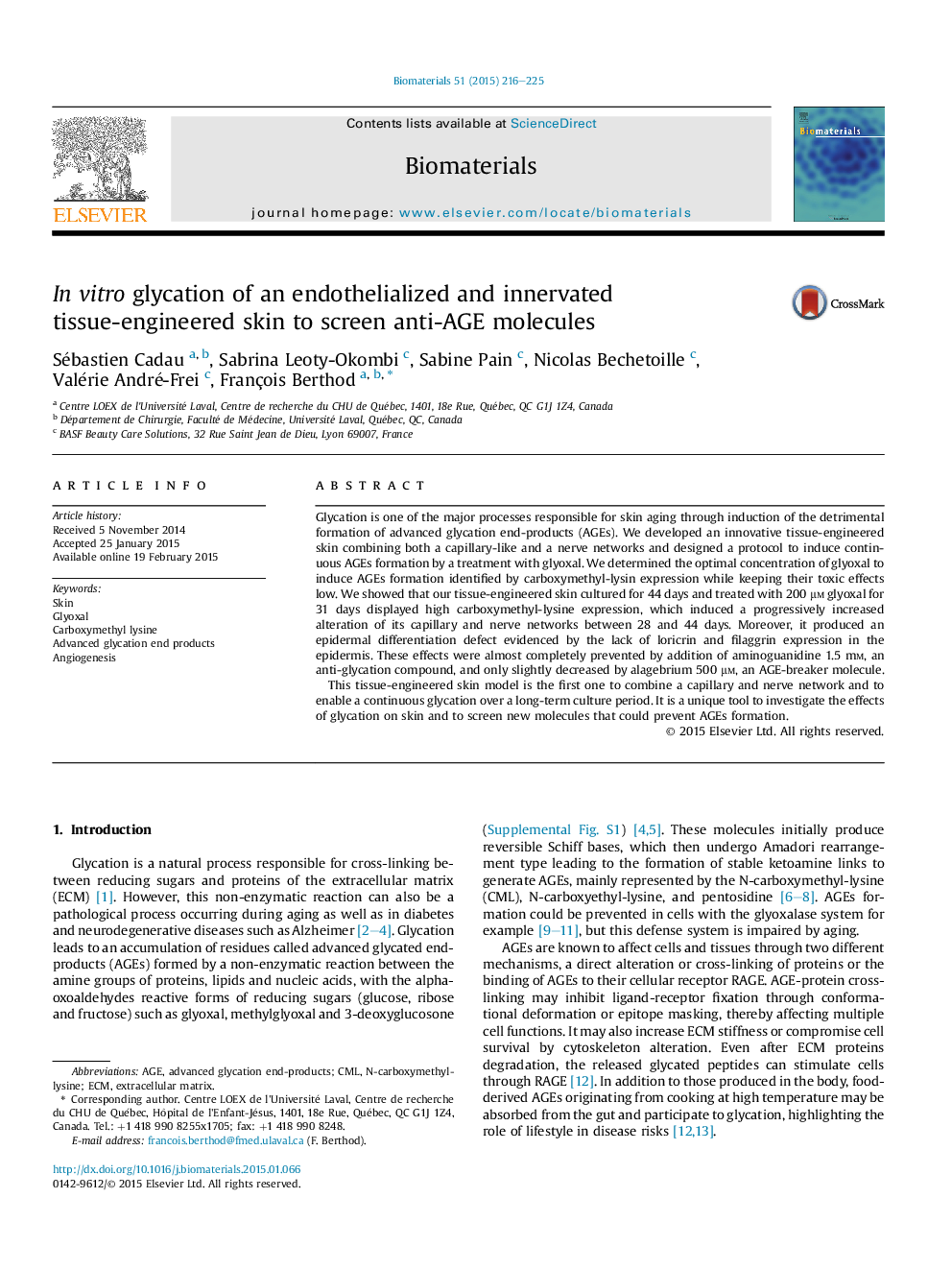| Article ID | Journal | Published Year | Pages | File Type |
|---|---|---|---|---|
| 5688 | Biomaterials | 2015 | 10 Pages |
Glycation is one of the major processes responsible for skin aging through induction of the detrimental formation of advanced glycation end-products (AGEs). We developed an innovative tissue-engineered skin combining both a capillary-like and a nerve networks and designed a protocol to induce continuous AGEs formation by a treatment with glyoxal. We determined the optimal concentration of glyoxal to induce AGEs formation identified by carboxymethyl-lysin expression while keeping their toxic effects low. We showed that our tissue-engineered skin cultured for 44 days and treated with 200 μm glyoxal for 31 days displayed high carboxymethyl-lysine expression, which induced a progressively increased alteration of its capillary and nerve networks between 28 and 44 days. Moreover, it produced an epidermal differentiation defect evidenced by the lack of loricrin and filaggrin expression in the epidermis. These effects were almost completely prevented by addition of aminoguanidine 1.5 mm, an anti-glycation compound, and only slightly decreased by alagebrium 500 μm, an AGE-breaker molecule.This tissue-engineered skin model is the first one to combine a capillary and nerve network and to enable a continuous glycation over a long-term culture period. It is a unique tool to investigate the effects of glycation on skin and to screen new molecules that could prevent AGEs formation.
